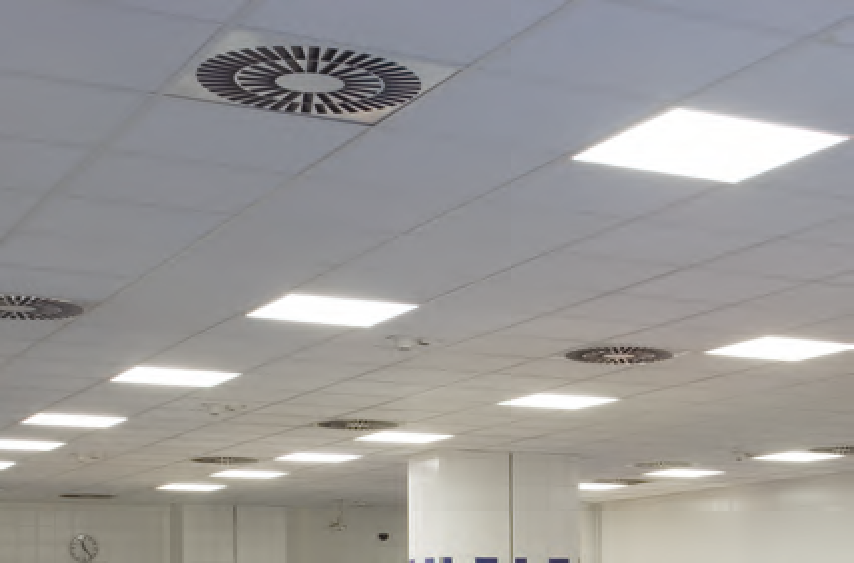An adequate lighting installation which fulfils photometric requirements for work place lighting, e.g. according to the standard EN 12464-1 and complies with legislation, regulations and directives concerning occupational health and safety can be determined in various ways.
One possibility is the consideration of a standard arrangement in a standard geometry.
Many existing room systems feature e.g. square lay-in luminaires in system ceilings with axis dimensions of 600 mm or 625 mm. Systems of this kind were often equipped with 3 or 4 T8 fluorescent lamps at 18 watts nominal lamp wattage. Due to luminaire defects or inefficient high energy consumption, most of these luminaires are due to be replaced.
